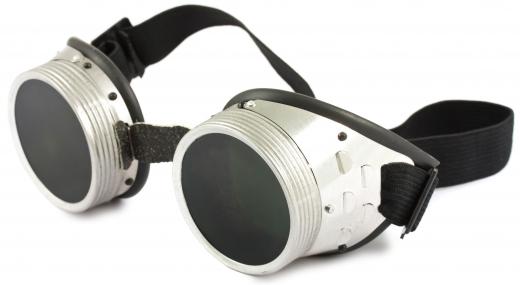At AboutMechanics, we're committed to delivering accurate, trustworthy information. Our expert-authored content is rigorously fact-checked and sourced from credible authorities. Discover how we uphold the highest standards in providing you with reliable knowledge.
What is Pattern Welding?
Pattern welding is a decorative metalworking technique commonly used in sword making and knife making. This technique originated in the ancient Damascus area of the Middle East during the 11th century, and is known in some areas today as Damascus steel. During pattern welding, craftsmen combine multiple layers of metal to form high-quality swords or knives with unique appearances, Pattern welding not only allows the craftsman to apply decorative effects to the metal, but also gives the metal enhanced physical properties.
Traditional metalworkers have relied on pattern welding techniques for thousands of years to prepare weapons that must hold up during battle. While iron is soft and malleable, steel is often very hard and brittle. By combining layers of these two materials, workers could take advantage of the best qualities of each one to create strong, yet durable blade weapons. Today, advanced steel-making techniques minimize the need to blend metals in this manner, but many still use pattern welding to create decorative and historic pieces.

The Damascus sword represents one of the most well-known examples of pattern welding. This sword design features a cable, or herring bone, design centered along the length of the surface. To create this design, craftsmen twist two metal rods around one another, then join them together by welding or hammering. The result is a curling, twisting pattern that is common to pattern welding.

Modern metal workers combine high carbon steel and tool steel in alternating layers to produce intricate designs and details in swords or knives. These weapons may feature hundreds of layers, which is often seen as a sign of skill. While weapons with hundreds of layers allow craftsmen to create highly decorative designs, too many layers often result in a weaker sword that is ill-equipped for combat. To increase design possibilities without adding infinite layers, workers may simply vary the steel mixture to take advantage of the natural black or silver finishes of different metal products. Craftsmen may also modify welding speed and techniques, or even the type of weld used to make each piece.
As workers add layers of metal to each sword, they then manipulate the layers of metal to create historical or modern design patterns in each sword. This can be accomplished by twisting, hammering or folding the metal as it hardens. It may also involves cutting and stacking layers together, or double-folding specific sections. Once the sword or knife has hardened, it can be further refined with milling, inlays, or etching techniques.
AS FEATURED ON:
AS FEATURED ON:












Discuss this Article
Post your comments